Running paid ads is one of the best ways to increase brand awareness, generate leads, and drive sales. But with so many platforms available, choosing the right one for your business can be overwhelming. Each platform has unique strengths, and selecting the best one depends on your target audience, budget, and marketing goals.
In this guide, we’ll help you decide where to invest your advertising budget for the best results.
1. Identify Your Advertising Goals
Before selecting a platform, define what you want to achieve with your paid ads.
✔️ Brand Awareness – Get more people to know about your business.
✔️ Lead Generation – Collect emails, sign-ups, or inquiries.
✔️ Sales and Conversions – Drive online purchases or bookings.
✔️ Website Traffic – Increase visitors to your website or landing page.
📌 Learn how PPC can help achieve your marketing goals
2. Understand Your Target Audience
Each platform attracts different user demographics. Choose the one that aligns with your ideal customers.
🔹 Google Ads – Best for people actively searching for products or services.
🔹 Facebook & Instagram Ads – Ideal for reaching users based on interests and behavior.
🔹 LinkedIn Ads – Perfect for B2B marketing and targeting professionals.
🔹 TikTok & Snapchat Ads – Great for engaging younger audiences with short videos.
🔹 YouTube Ads – Best for video storytelling and brand awareness.
📌 See how social media advertising can boost your business

3. Compare Different Advertising Platforms
Here’s a breakdown of the most popular paid ad platforms and when to use them:
🔹 Google Ads
✅ Best for businesses that want to show up when users search for relevant keywords.
✅ Effective for local businesses, eCommerce, and service-based industries.
✅ Includes Search Ads, Display Ads, Shopping Ads, and YouTube Ads.
📌 Optimize your Google Ads campaigns for better results
🔹 Facebook & Instagram Ads
✅ Great for targeting users based on demographics, interests, and behaviors.
✅ Best for eCommerce, lifestyle brands, and businesses looking to increase engagement.
✅ Supports various ad formats like image, video, carousel, and story ads.
📌 Maximize your social media marketing with expert strategies
🔹 LinkedIn Ads
✅ Ideal for B2B businesses targeting professionals and decision-makers.
✅ Best for lead generation, recruitment, and industry networking.
✅ Offers sponsored posts, InMail, and text ads.
📌 Leverage LinkedIn for high-quality business leads
🔹 YouTube Ads
✅ Best for businesses that want to use video content for marketing.
✅ Great for brand storytelling, product demonstrations, and educational content.
✅ Works well for both local businesses and global brands.
📌 Learn how video marketing can increase your brand reach
4. Consider Your Budget and Ad Costs
Different platforms have varying costs per click (CPC), cost per impression (CPM), and conversion rates.
💰 Google Ads – Higher CPC but strong intent-based targeting.
💰 Facebook & Instagram – Lower CPC with high engagement potential.
💰 LinkedIn Ads – More expensive but excellent for B2B marketing.
💰 YouTube Ads – Cost-effective for video content marketing.
📌 Learn how to manage a PPC campaign on a budget
5. Test and Optimize Your Ads for Best Results
Once you choose a platform, don’t just set up ads and forget about them. Monitor performance and make adjustments to improve results.
🔹 A/B test different ad creatives – Try different images, videos, and copy.
🔹 Adjust targeting – Refine your audience based on performance data.
🔹 Optimize landing pages – Ensure they match your ad message for better conversions.
📌 Discover how A/B testing improves PPC campaigns
Final Thoughts
Choosing the best platform for your paid ads depends on your business goals, audience, and budget. If you’re looking for high-intent customers, Google Ads may be the best option. If you want to build brand awareness and engagement, Facebook & Instagram Ads could work better. The key is to test, analyze, and optimize your campaigns for maximum ROI.
🚀 Need help running paid ads? Contact us today!
📧 Email: Syed_66@hotmail.com
📞 Call: 0161 399 3517
🌐 Visit: Social Media Max
